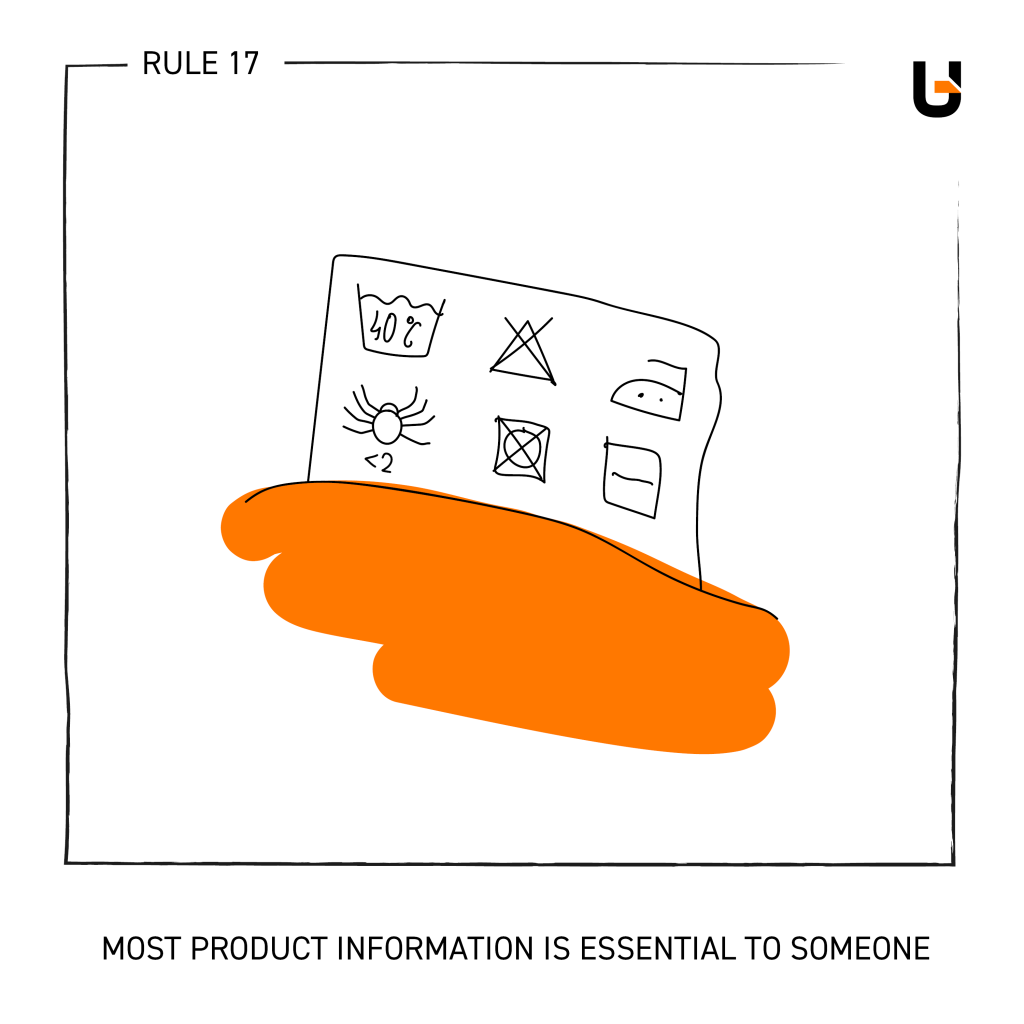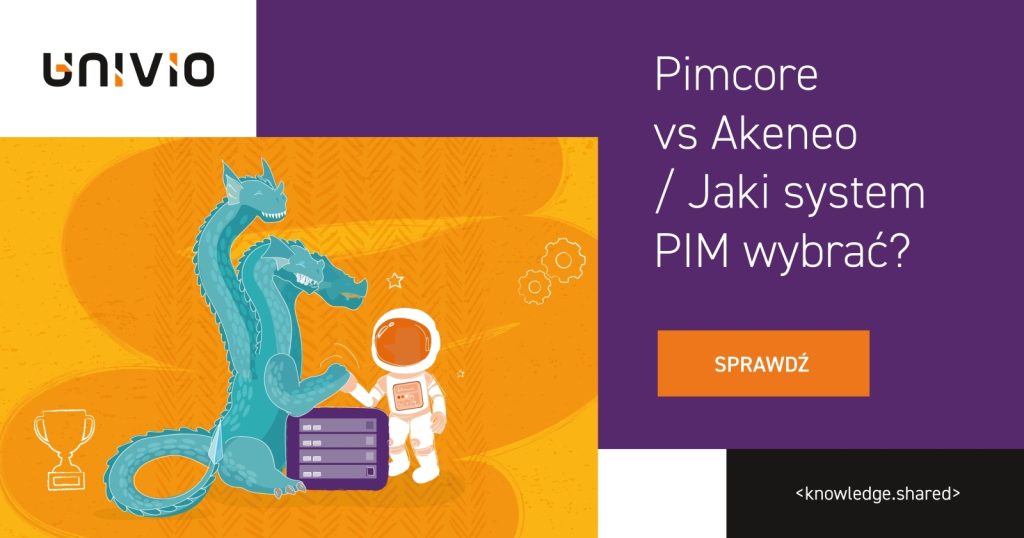PIM for Retail / Mastering Information Chaos
In today’s business environment, retail is much more than simply just “doing business”. Each and every retail business needs to constantly adapt to the customer demands, expectations and ever evolving shopping habits.
Consumers, for example, may make a purchase in a stationary store, but at the same time they also use the phone: 72% of them check the price, 69% the reviews, and 52% the detailed product description. This confirms how efficiently customers switch between sales channels and, secondly, how important catchy and accurate product data is to them.
Managing product data effectively, however, can be a challenge, especially with a vast assortment. Bringing this information chaos under control can be answered via a PIM solution – enabling not only effective master data management for goods, but also adapting such product data to market changes and maintaining information consistency in a dynamic business environment.
PIM Systems in the Retail Industry
The main task of a PIM solution is to centralize and manage product information across a company’s marketing and shopping channels This mainly includes product descriptions, technical specifications, multimedia materials (including photos, videos and other digital assets), prices and other relevant details.
If you run an electronics store, for example, a PIM solution can help you to easily manage and ensure product data quality across the hundreds of items you likely offer, including the necessary specifications, customer reviews, and product images. Consequently, online shoppers browsing your e-commerce store will find clear, consistent and up-to-date product information. If they go your mobile app or stationary store, they will also find the same product data, providing a consistent customer experience.
We can also consider a clothing store as another scenario, typically offering goods both online and offline. Thanks to a product information management system, the description, sizes, colors and other details for each item of clothing is easily accessible and updated across all sales channels. The customer can make purchases without concern, safe in the knowledge that the information is consistent regardless of the channel.

Benefits of PIM Retail Systems
In the digital age, especially with the growing popularity of omnichannel commerce, there are extremely high expectations for consistent product information. Whether a customer is browsing an ecommerce platform, online marketplace or visiting a stationary store, they want complete and accurate product details.
A PIM system is a tool that not only maintains consistent product information, but also brings many other benefits.
- Data consolidation: Managing product data scattered across different systems is difficult. A PIM solution makes it possible to consolidate this data in one place, as a single source of truth, which in turn makes it easier to update and share.
- Quickly update assortments: Retail ranges typically come from multiple brands and suppliers and span multiple categories. Product Information Management tools are designed to streamline the management and rapid updating of data across channels, enabling even small teams to instantly add new products, adjust prices and manage product availability.
- Streamlining internal processes: Centralizing data paves the way for more effective collaboration and the easier management of product information. In practice, by eliminating redundant manual data entry, employees can operate more efficiently, and the company can save some time and resources.

PIM for Retail as Part of an Omnichannel Strategy
As we have mentioned many times before, omnichannel strategies are becoming a element. Companies that effectively implement omnichannel – including both analogue and digital channels – gain a competitive edge over those that don’t. When it comes to retail, a PIM solution can play a vital role in this process.
It offers B2C companies a centralized hub to effectively integrate and manage product information across all channels, from the e-commerce platform and mobile app to stationary stores, the product catalog and even external online marketplaces.
All of this enables customers to seamlessly and seamlessly transition between different brand touchpoints – providing a powerful customer experience in line with omnichannel, and building a strong and consistent brand (not to mention brand loyalty) along the way.

A PIM solution also meets the more specific needs of the retail sector, such as its heavy reliance on trends and seasonality. With Product Information Management, its possible to quickly adjust offers and update product details with ease, and thus also rapidly and flexibly respond to changing market conditions. When introducing a new collection, changes in descriptions, prices and availability are immediately visible across all channels.
Omnichannel is not only a consistent experience, but above all a shopping journey that is perfectly tailored and maximally convenient. Integrating your PIM solution with your CRM and e-commerce systems enables you to create personalized shopping experiences, generating a complete picture of the consumer based on their behavior in each channel. This makes it possible to run more effective promotional campaigns, covering both physical stores and online channels.
The Importance of Integrating Retail PIM Solutions
A PIM system is a powerful tool on its own, but it is only with the right integrations that its full potential in the retail industry can be discovered.
Integrating PIM with sales, warehouse and e-commerce systems helps you in maintaining consistent product data across all areas of your business and similarly eliminating barriers between different channels. These integrations also help data flow seamlessly across the enterprise ecosystem. As a result, managing product data, merchandise availability, and price updates – as well as responding to immediate market changes – is so much easier for your sales, marketing and merchandising teams.
PIM Integration with ERP Systems
Integration with ERP systems enables the efficient management of enterprise resources, including warehouses, supplies or finances. As a result, data related to the product assortment, availability of goods and inventory are automatically synchronized with the PIM solution, eliminating the risk of errors and facilitating the day-to-day management of operations. This is of particular importance for retailers who strive for optimal inventory levels, with attention directed at minimizing costs.
PIM vs. CRM Systems
Integration with CRM systems makes it possible to better understand shoppers and improve customer service levels. Data about customer preferences, purchase history or interactions is available in one single source, enabling you to personalize your range, manage marketing campaigns more effectively and build lasting relationships.
Dynamic Pricing vs. PIM System
The dynamic pricing strategy involves flexibly adjusting product prices based on current information. The key factors taken into account typically include a competitive analysis, sales data (including demand and availability) and consumer preferences. In practice, this means that product prices are regularly modified to respond to changing market conditions, enabling companies to adjust their offer to meet current needs and optimize financial performance.
Manually monitoring prices and changing them is a tedious and time-consuming task, not to mention highly error prone. If the PIM can integrate seamlessly with your ERP system or price server, on the other hand, this manual data entry process can be fully automated. PIM solutions support pricing processes by enabling the storage of detailed product information, including details on the price itself.
Additionally, many sellers use built-in margin management tools available on specific sales and e-commerce platforms, such as Magento or Adobe Commerce, for example.
Product Data Management System vs. Cross-border
In a search for new markets and a desire to increase sales, many retail companies are beginning to look abroad. Entering these markets presents many challenges, including logistical ones, but also many hurdles regarding the presentation of the product range in different regions around the world.
A PIM system allows product information to be managed in multiple languages, eliminating the language barrier and ensuring transparency in international transactions. In addition, a PIM solution enables descriptive data to be customized to meet the specific requirements and preferences of different markets. This includes currency conversion, units of measurement and compliance with local regulations.
For example, we can look at the likes of food label regulation issues specifying nutritional content, ingredients, allergen information, etc., or differences in product safety standards, such as for toys and children’s products.
Cross-border trade often involves managing a complex assortment structure tailored to different markets. Product Information Management systems excel at managing complex and diverse product catalogs, making it an effective choice for companies looking for a faster time to market during cross-border expansion.

How to Best Choose a PIM Solution
Choosing the best PIM system for a B2C company requires careful analysis and a keen understanding of the organization’s specific needs. Consider what business goals you want to achieve with this tool. Is it to increase revenue, reduce costs, or perhaps support overseas expansion?
Understanding your goals will help you determine the functionalities that are the most important to you. It’s certainly worth considering support for different product categories, variant management, handling seasonality, or flexibility in presenting content on different sales channels. Leading vendors like Pimcore, Ergonode and Akeneo offer Enterprise and Community versions of their PIM tools, which can be customized to meet your current business needs.

Usability
PIM software, like other digital tools, also needs to be intuitive to use. It’s an undeniable fact that a user-friendly interface, alongside training and support, will help such any PIM solution become familiar within your teams. In turn, those teams are able to unleash the system’s full capabilities.
For example, Pimcore’s open source software provides ample opportunity for data usage and customization for the requirements of a specific company. It has the advantage of flexibility, but the technically focused interface can be challenging for less proficient users. Akeneo, on the other hand, is recommended for organizations that aim for standard functionality and expect the tool to be simple and intuitive to use.
A user-friendly interface is also something Ergonode is betting on, offering multilingualism, product completeness statuses, AI support and convenient work for teams with different access privileges, in addition to the option for efficient data editing.
Performance
The issue of performance is no less important, especially if you offer a large and diverse range of products. The system should be able to handle large amounts of data efficiently, provide quick updates of information, and work smoothly with other areas of the business.
Data Security
When choosing a PIM system, evaluate how it protects the confidentiality and integrity of product information. Security features include, for example, access control at different privilege and user permission levels, the encryption of data during transmission and storage, and the systematic monitoring of user activity. For retail companies with a high focus on data governance, it’s important not to underestimate this choice, even when it comes to media files and text descriptions.
Integrate Product Data Across All Retail Channels
To sum up, choosing a PIM solution will help your retail business gain a long term perspective, looking at both the immediate and future needs of your organization. In finding the best solution – and thus gaining the best competitive edge 😉 – a thorough analysis of your requirements and business goals will be essential.
You can then take advantage of the trial versions offered by many leading PIM software vendors, in order to gain first hand experience and a better understanding of all the available functionalities. This way, you can reliably assess whether the tool will meet your expectations and needs towards managing product data and related digital assets.







